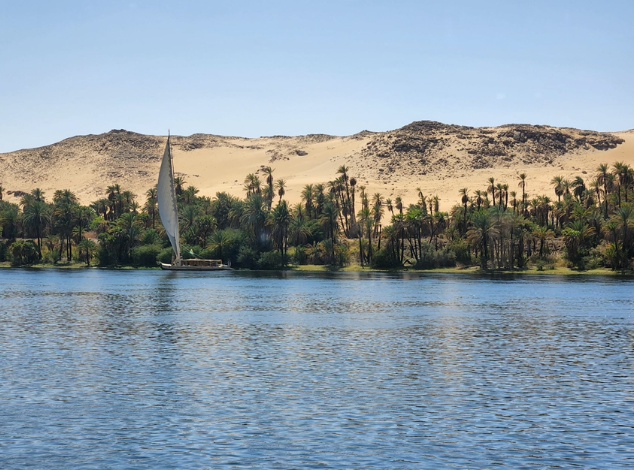|
The Nile Time, the river, winds the length of Egypt. So much is asked of it, so much given. Hemmed in by the desert’s desolation, it fertilized pharaonic fantasy. Its bulrushes hid the baby Moses, prophet of the Bible’s Exodus. Sandwiched by sand and toasted by heat, it’s offered a verdant, varied relief. Cattle graze along its banks; men harvest irrigated crops of wheat and sugarcane. What once transported quarried limestone blocks now plies itineraries for tourist stops. Aswan, Edfu, Esna, Luxor, Cairo: it’s quenched the thirst of their pasts and present. There would be no Egypt without the Nile. There would be no life without its water. And there would be no time—without its when, its while. John Delaney The White Nile from Lake Victoria in Kenya and the Blue Nile from Lake Tana in Ethiopia join at Khartoum, Sudan. From there the Nile flows north through Sudan and Egypt to the Mediterranean. After retiring as curator of historic maps at Princeton University Library, John moved out to Port Townsend, WA, and has traveled widely, preferring remote, natural settings. Since that transition, he has published Waypoints (2017), a collection of place poems, Twenty Questions (2019), a chapbook, and Delicate Arch (2022), poems and photographs of national parks and monuments. Galápagos, a chapbook of his son Andrew’s photographs and his own poems, will appear later in 2023.
1 Comment
Carol Delaney
12/25/2023 01:16:53 pm
Thanks John: Merry Christmas to you too. love, carol
Reply
Your comment will be posted after it is approved.
Leave a Reply. |
The Ekphrastic Review
COOKIES/PRIVACY
This site uses cookies to deliver your best navigation experience this time and next. Continuing here means you consent to cookies. Thank you. Join us on Facebook:
July 2024
|




